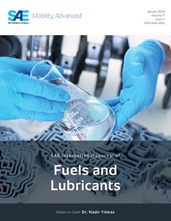The article contains the results of operational investigations of deposit
formation on external and internal surfaces of injector nozzles of the marine
self-ignition engines during their operational use. The aim of this article is
to introduce an image analysis method for global assessment of the quantity and
quality of injector nozzle deposits in piston internal combustion engines. The
components of medium-speed marine engines fueled with distillation and residual
fuels were investigated. Digital images of new and used injector nozzles without
deposits and with random deposits formed after natural operation on marine
ships, respectively, were taken. Macro and microscopy images of external
surfaces were taken in a shadowless tent and were illuminated with
low-temperature lamps. The characteristic surfaces of the injector nozzles were
virtually separated from the white background. The amount and quality of the
resulting deposits on individual injector nozzles was determined by means of a
global analysis of the blackening degree of gray images and the share of basic
RGB (red, green, blue) colors. Basic central statistical
measures were applied to assess the deposits of the investigated injector
nozzles, and models of wear were developed. There have been archived photographs
of the distinguished surfaces of various types of bodies and needles of injector
nozzles and results of images analysis performed.
This method is an innovative, nondestructive diagnostic technique for the
characterization of deposits in internal combustion engines with the use of
symptoms expressed in numerical form. Digital images were analyzed with basic
central statistical measures, which were calculated from a sample of random
pixel variables.
